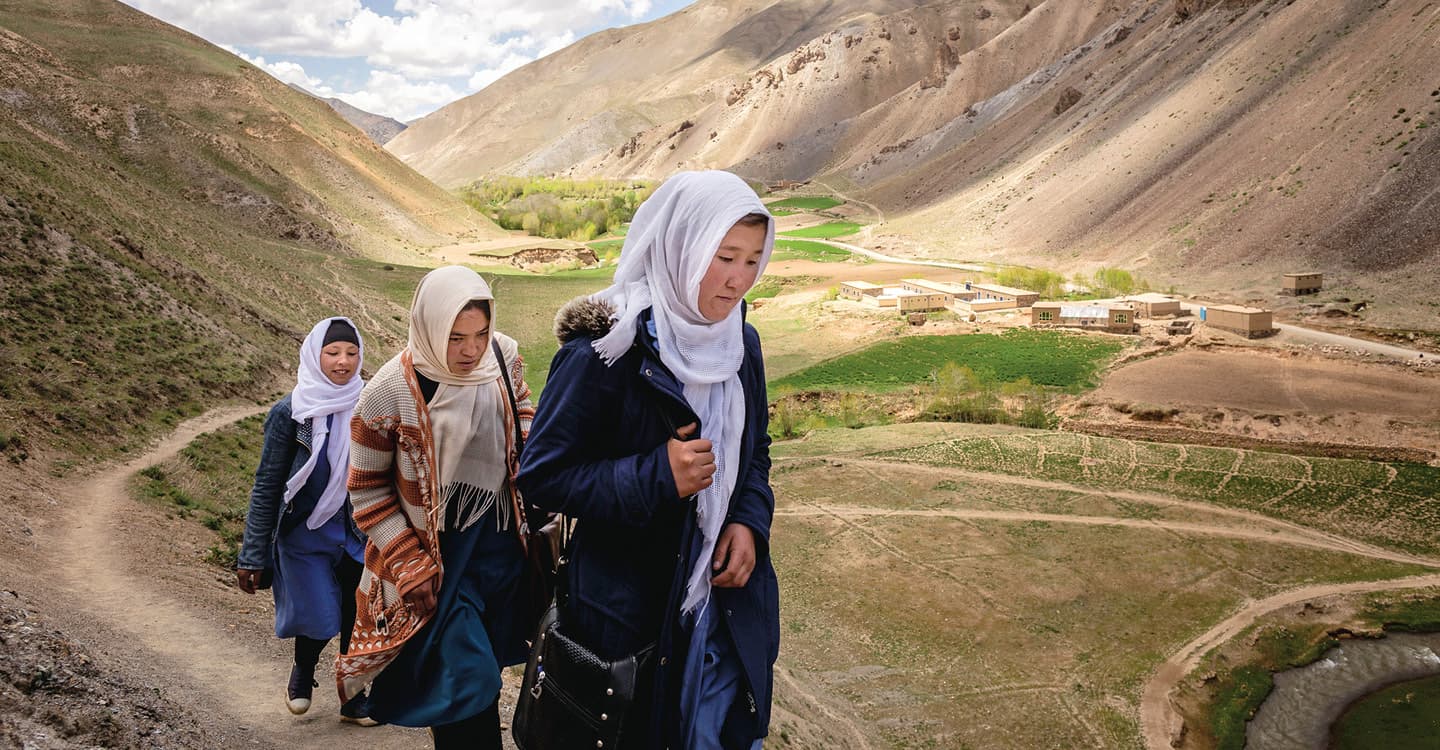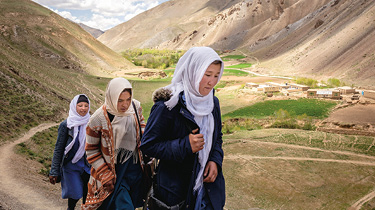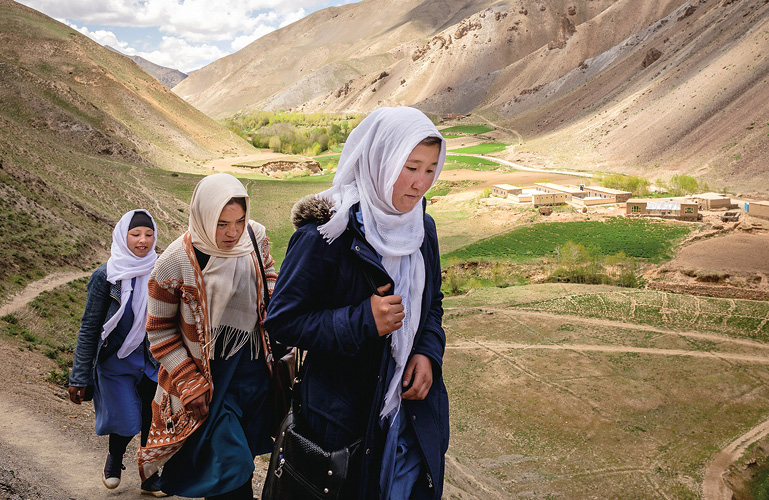The girls begin appearing at about seven in the morning. Seen from a distance, they make up thin blue lines snaking across the barren tan mountainside along narrow trails traced in the dirt. They converge from several directions on the little school in the bottom of the valley.
Many of the girls, wearing powder-blue school uniforms and white head scarves and ranging in age from 7 to 18, have already been walking for an hour or more by the time they arrive at the school. There are smaller groups of boys too, mostly out of uniform, walking apart from the girls.
By 7:45, they are all gathered for assembly in the yard of the Rustam School, in a remote corner of Afghanistan’s Yakawlang District. It is the area’s only high school and serves students in 1st through 12th grade. It has an enrollment of 330 girls and 146 boys—astonishing in a country where normally only a third of girls attend school.
The principal, Mohammad Sadiq Nasiri, 49, gives his daily pep talk: Getting into a university is going to be harder than ever this year, so they are going to have to do better than ever.
The girls begin appearing at about seven in the morning. Seen from a distance, they make up thin blue lines snaking across the barren tan mountainside. Each of them walks along the narrow trails traced in the dirt. They come from several direction to gather at the little school in the bottom of the valley.
The girls wear powder-blue school uniforms and white head scarves. They range in age from 7 to 18. Many of them have already been walking for an hour or more by the time they arrive at the school. There are smaller groups of boys too. They’re mostly out of uniform, walking apart from the girls.
By 7:45, they are all gathered for assembly in the yard of the Rustam School, in a remote corner of Afghanistan’s Yakawlang District. It is the area’s only high school and serves students in 1st through 12th grade. It has an enrollment of 330 girls and 146 boys. That’s astonishing in a country where normally only a third of girls attend school.
The principal, Mohammad Sadiq Nasiri, 49, gives his daily pep talk. Getting into a university is going to be harder than ever this year, he says. He tells the students that they are going to have to do better than ever.



